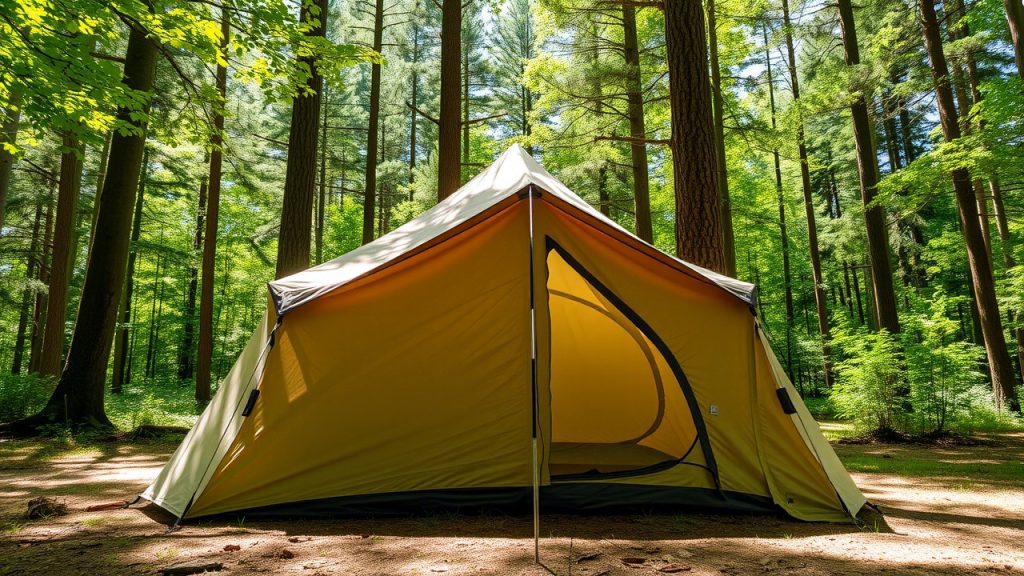Camping is one of the most rewarding ways to unplug from the daily grind and connect with nature, friends, or family. But as anyone who’s spent a night shivering in a leaky tent, untangling poles in the dark, or tripping over gear can tell you camping isn’t always stress-free. Fortunately, the right tent setup can change everything. With thoughtful planning and smart gear choices, you can transform even the most rugged campsite into a cozy, functional, and peaceful outdoor home.
We explore the 15 best tent ideas for stress-free outdoor living. These strategies will help you improve comfort, save time, stay organized, and avoid common headaches on your next adventure. Whether you’re camping for a weekend at the lake, setting up base at a music festival, or venturing into the backcountry, you’ll find ideas here to make your outdoor living smoother and more enjoyable.
Why Your Tent Setup Is the Key to a Relaxing Trip
A tent is more than just a place to sleep. It’s your shelter, your locker room, your hangout space, and sometimes your kitchen or office. A poorly chosen or badly set-up tent can leave you miserable: wet sleeping bags, cramped space, bad airflow, and constant clutter.
On the flip side, a well-thought-out tent setup can turn a bare patch of dirt into a cozy, organized, and efficient living space. By focusing on easy setup, comfort, weatherproofing, and clever accessories, you can eliminate stress and spend more time enjoying nature.
1. Choose a Tent with Easy Setup
Forget complicated pole systems or puzzling instructions. Look for tents designed for quick setup, such as pop-up tents, instant tents with pre-attached poles, or tents with color-coded clips and poles.
For example, the Coleman Instant Cabin Tent or the Quechua 2 Seconds Easy Tent can be pitched in under two minutes. Practicing setup before your trip will also save time and frustration at the campsite.
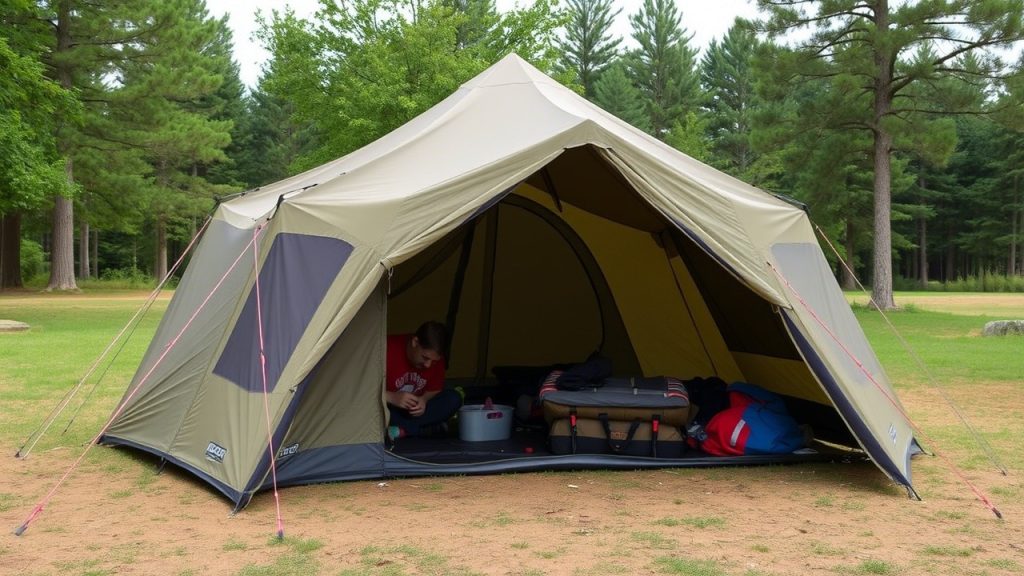
2. Focus on Good Ventilation
A poorly ventilated tent leads to condensation, damp sleeping bags, and stale air. Choose tents with mesh panels, multiple windows, ceiling vents, and double doors. For example, the REI Half Dome SL 2+ has excellent ventilation, making it perfect for warmer climates or humid conditions.
Bonus tip: Position the tent to face the breeze to maximize airflow.
3. Invest in a Tent with a Vestibule
A vestibule acts like a mudroom for your tent, offering covered space to store dirty boots, backpacks, or wet gear. This keeps the sleeping area cleaner and creates more usable space inside. Many models, like the MSR Hubba Hubba NX or Big Agnes Copper Spur, come with spacious vestibules or optional add-ons.
4. Use a Tent Footprint or Groundsheet
Protect your tent’s bottom from sharp rocks, roots, and damp ground by adding a footprint or groundsheet. These thin layers reduce wear and tear and provide added waterproofing. Some tents come with fitted footprints, but even a lightweight tarp cut to size can work wonders.
Make sure it’s slightly smaller than the tent floor to prevent rainwater from pooling underneath.
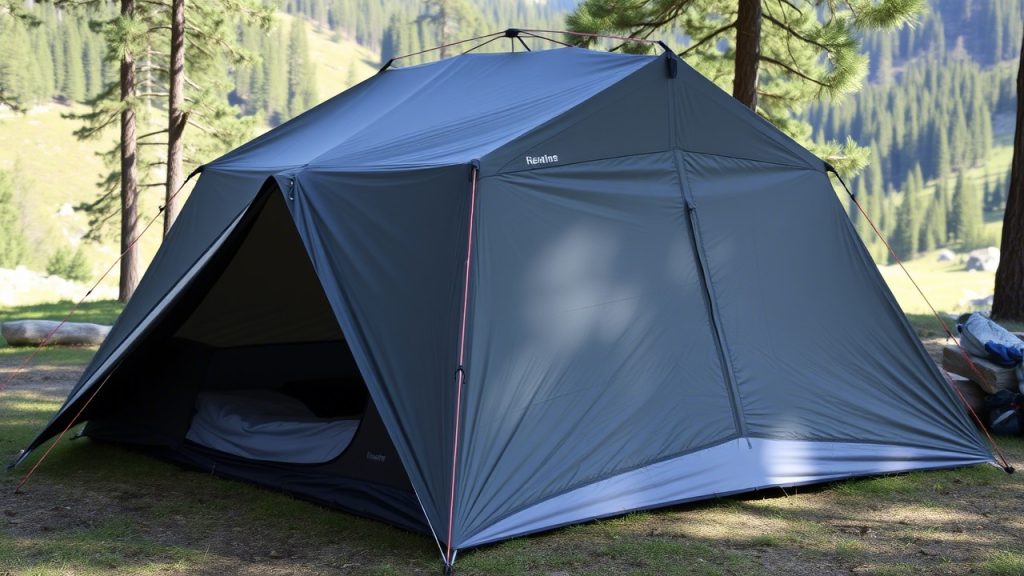
5. Bring a Lightweight, Packable Tent
If you’re backpacking, weight and size matter. Ultralight tents like the Big Agnes Tiger Wall UL or the NEMO Hornet Elite pack down to the size of a water bottle and weigh less than two pounds, offering impressive protection without burdening your pack.
6. Prioritize Weather Protection
Your tent’s weather resistance is crucial. Look for:
- A rainfly with full coverage
- High waterproof ratings (over 1500 mm for the fly, 3000 mm for the floor)
- Strong poles and reinforced seams
Brands like Hilleberg and MSR are known for tents that can handle heavy rain, wind, and even snow, giving you peace of mind in unpredictable conditions.
7. Go for a Spacious Tent
Tent capacity labels can be misleading. A “four-person” tent often fits two people comfortably. Upsizing—like using a six-person tent for a family of four—creates space for gear, pets, and movement. The REI Wonderland 6 and Kodiak Canvas Flex-Bow 6 are popular spacious models that balance comfort and durability.
8. Add a Tent Organizer or Gear Loft
Avoid the chaos of scattered gear with a tent organizer or gear loft. These hangable mesh pockets hold essentials like headlamps, phones, books, or glasses, so you’re not digging through your pack in the dark.
Brands like REI, Sea to Summit, and Gear Aid offer affordable and lightweight options.
9. Use LED Lighting or Fairy Lights
A cozy, well-lit tent can lift spirits after dark. LED lanterns, headlamps, or string lights (like Luminoodle or MPOWERD Luci lights) create a warm, welcoming atmosphere. Choose models with dimming features to reduce glare at bedtime.
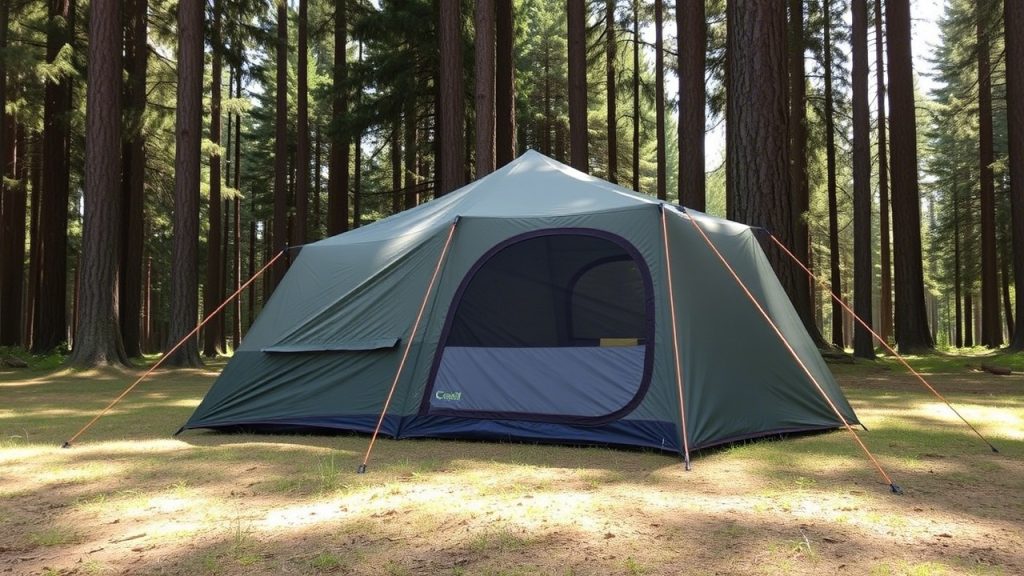
10. Set Up a Tarp or Canopy Outside
Adding a tarp or canopy extends your living space, offering shelter from sun or rain. You can cook, eat, or lounge without being crammed into your tent. A Kelty Noah’s Tarp or ENO ProFly Rain Tarp works great over picnic tables or hammocks.
11. Use Comfortable Sleeping Gear
Comfort is king in the outdoors. Upgrade your sleep system with:
- Inflatable sleeping pads or air mattresses
- Pillows or pillow stuff sacks
- Warm sleeping bags or cozy quilts
For ultimate luxury, try a camping cot to stay off the cold ground.
12. Choose a Tent with Multiple Doors
Multi-door tents reduce midnight scrambling over tentmates and improve airflow. They also let you set up a “private” exit when camping with friends or kids. The REI Half Dome and Marmot Limestone 4P are excellent examples.
13. Opt for Dark-Room or Blackout Tents
Early sunrises can cut sleep short. Dark-room or blackout tents block 90% or more of sunlight, keeping the interior cool and dark. The Coleman Dark Room series is popular for family camping trips.
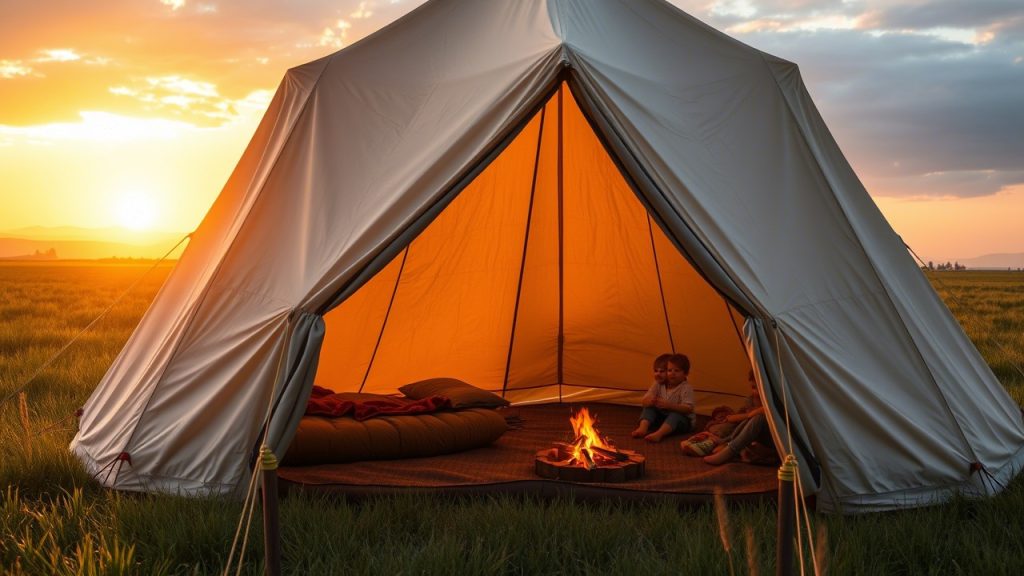
14. Practice Setup Before You Go
Avoid campground meltdowns by practicing at home. Unpack the tent, set it up, test the rainfly, and check stakes and guylines. This gives you a chance to troubleshoot and reduces setup time in the field.
15. Keep a Tent Repair Kit Handy
Even the best tents can suffer tears or broken poles. Pack a small repair kit with:
- Seam sealer
- Repair tape (like Tenacious Tape)
- Spare stakes and guylines
- A multitool
This simple step can save a trip from disaster.
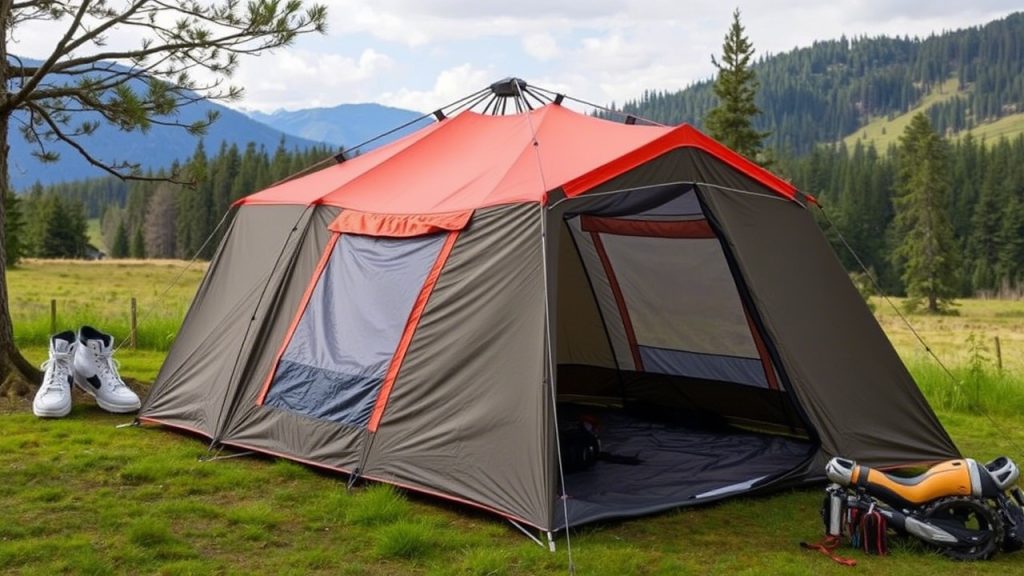
Extra Tips for Stress-Free Outdoor Living
- Pack an extra set of stakes and guylines in case of wind or rocky ground
- Bring a small broom or brush to keep the tent floor clean
- Set up camp before dark to avoid rushing or missing gear
- Use a shoe mat or basket at the door to prevent dirt inside
- Check weather forecasts and position your tent accordingly
11 Frequently Asked Questions
- What’s the easiest tent for beginners?
Look for instant or pop-up tents with simple designs, like the Coleman Instant Cabin or Quechua 2 Seconds. - How do I improve airflow in my tent?
Choose tents with mesh panels, open windows or vents, and avoid blocking airflow with gear. - What’s the best tent size for a couple?
A three-person tent offers extra space for gear and comfort. - Can I use an ultralight tent for car camping?
Yes, but ultralight tents prioritize weight over durability and space, so they may feel cramped compared to standard models. - How do I stay dry in heavy rain?
Use a full-coverage rainfly, seam-seal your tent, set up on high ground, and add a footprint. - What’s the best lighting for a tent?
LED lanterns or battery-powered string lights offer soft, reliable illumination. - Do I need a footprint under my tent?
It’s highly recommended to protect the floor and add waterproofing. - How can I make tent sleeping more comfortable?
Use a high-quality sleeping pad, bring a pillow, and wear warm, dry clothing to bed. - What’s the advantage of multiple doors?
Better access, improved ventilation, and less disruption when others leave or enter. - Should I bring a tarp even if my tent is waterproof?
Yes—a tarp adds extra shelter for cooking or relaxing and protects your tent from harsh sun or rain. - How do I pack up a wet tent?
Shake off excess water, pack it loosely, and dry it as soon as possible to prevent mildew.
Conclusion
Camping doesn’t have to be a stressful juggling act. By following these 15 best tent ideas for stress-free outdoor living, you can turn any outdoor adventure into a comfortable, organized, and enjoyable experience. Whether you’re a first-timer or a veteran camper, smart gear choices, preparation, and a few thoughtful extras will help you relax and focus on what matters most connecting with nature, friends, and yourself.
Remember to match your tent and gear to the type of camping you’re doing, practice setting up before you go, and always pack with organization and comfort in mind. With the right approach, you can confidently head into the wild knowing you’re prepared for whatever nature throws your way.
Happy camping—and here’s to stress-free nights under the stars!

